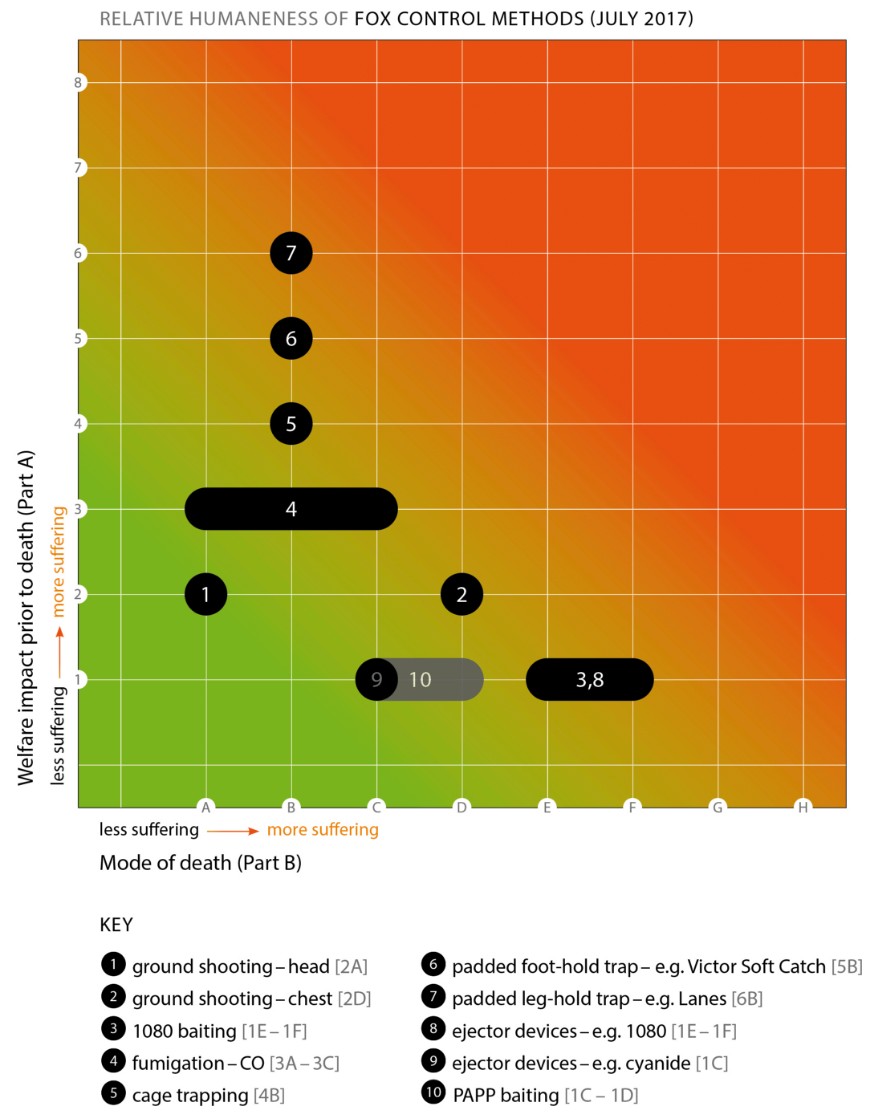We are responsible for introducing foxes to Australia. It is up to us to manage their numbers effectively and humanely to reduce their impacts. Using humane and targeted control methods is paramount and required by law.
National Code of Practice for the Humane Control of Foxes
In Australia, fox control is guided by the National Code of Practice for the humane control of foxes, which provides information and guidance to people responsible for controlling foxes. However, states and territories can apply more stringent requirements in their jurisdictions.
The National Code of Practice for the humane control of foxes (and more information on PestSmart) provides recommendations and standards for conducting humane and effective control of fox populations. It outlines a framework for managing foxes to minimise their impacts on agriculture, biodiversity and public safety, while ensuring ethical treatment.
The code emphasises the use of targeted control methods (such as trapping, shooting and poison baits) and discourages inhumane or non-selective methods. It stresses the importance of considering the welfare of both target and non-target animals during control efforts.
The code promotes responsible planning and monitoring of fox control programs, including assessing population impacts and the effectiveness of control methods. It also highlights the importance of complying with laws and regulations, and engaging with local communities and stakeholders to foster understanding and support for managing foxes.

Humane and effective fox control is important to protect our precious wildlife. Photo: Donald Hobern via Flickr.
Fox control methods humaneness matrix
In Australia, many fox control methods have been assessed and compiled in a humaneness matrix. The ‘humaneness’ of a pest animal control method refers to the overall welfare impact that the method has on an individual animal.
The Fox control methods humaneness matrix (and more information on PestSmart) assesses the humaneness of fox control methods.
It employs a matrix that considers the degree of suffering experienced by the animal prior to death and from the mode of death. A relatively more humane method will have less impact on an animal than a relatively less humane method. This does not always mean that the more humane method is the most appropriate tool to use in your fox management program. The techniques used need to be weighed up with effectiveness in terms of overall control, so that we are not just killing foxes for the sake of killing foxes, but are reducing the impacts of these invasive predators.
Banner photo: Matthew Rogers.

Source: Sharp and Saunders, 2008.
